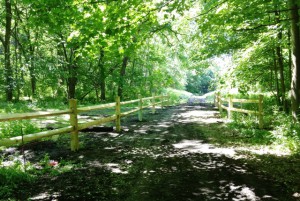Sustainability Standards
The central theme of the Williams Lake Project is environmental sustainability.
The Williams Lake Project employs multiple sustainability practices to reduce environmental impacts and conserve natural resources.
The Williams Lake Project has developed a sustainability matrix to set specific objectives and indicators of success for a range of environmental categories across the development timeline (planning and design; demolition and construction; long-term operation). The matrix contemplates six categories (energy, materials, ecology, water, ambient conditions and people). Specific goals and indicators are in development.
Specific commitments include:
- LEED certification for the hotel lodge & spa
- High-performance building design (energy and water-efficient)
- Geo-thermal heating and cooling; solar thermal and solar photo-voltaic (PV)
- Green roofs, porous pavement, constructed wetlands
- Use of natural construction materials where possible
| Williams Lake Project—Sustainability Matrix | |
|---|---|
| Category | Sustainability Measure |
| Energy | Design high performance buildings (energy efficiency, efficient systems and technologies, green roofs, etc.) |
| Energy | Generate renewable energy on site (space heating and cooling for hotel lodge and spa; 50% of hot water demand) |
| Materials | Reuse on-site materials (limestone, wood); source regional materials otherwise |
| Materials | Source Forest Stewardship Council certified sustainable wood products. |
| Ecology | Over half of proposed residences and 34% of new development is located on land of historic disturbance |
| Ecology | Limit grading and clearing to a ten foot buffer around roads and buildings |
| Ecology | Avoid and protect wetlands and vernal pools |
| Ecology | Cluster buildings to preserve open space |
| Ecology | Employ modern, low-impact infrastructure (central water and wastewater) |
| Water | Conserve and reuse water (low-flow fixtures, greywater recycling in hotel lodge) |
| Water | Implement low-impact stormwater controls |
| Ambient Conditions | Emphasize non-motorized transportation to promote wellness, limit noise and reduce greenhouse gas emissions |
| Ambient Conditions | Architectural design to draw from local vernacular, utilize natural materials and select exterior colors consonant with the natural landscape |
| People | Include deed restrictions on homeowners to ensure responsible land management (e.g. no harmful chemicals in landscaping) |
| People | Educate residents and guests regarding sustainability and natural resource protection through resort programming |





